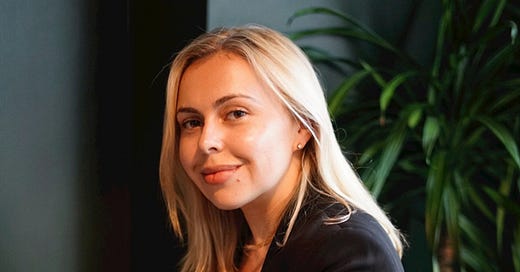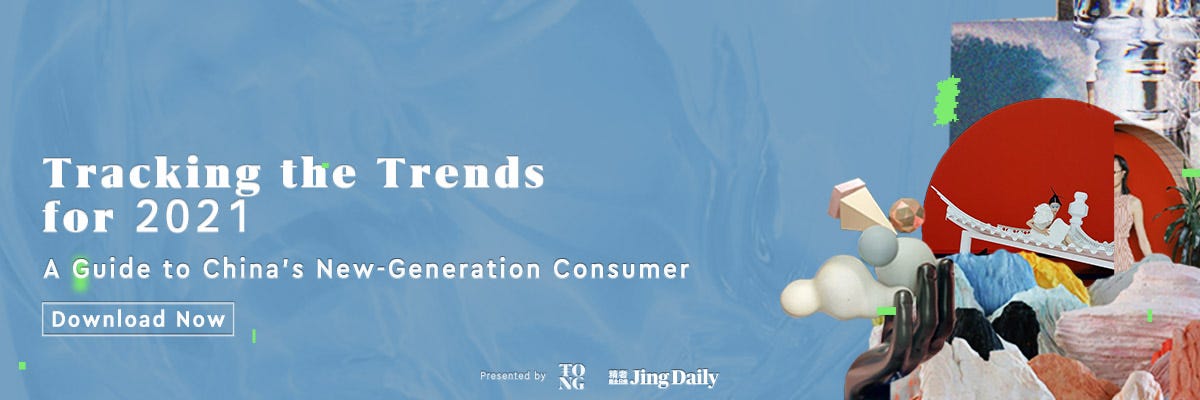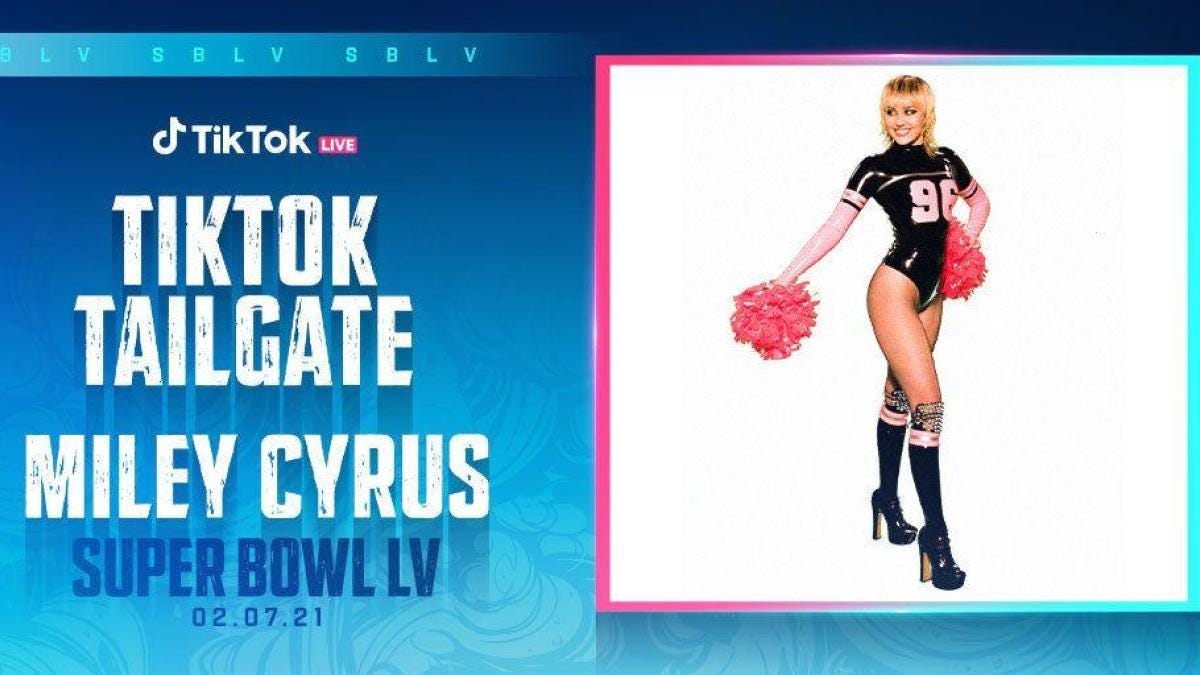The 2021 Low-Down on Influencer Marketing with MediaCom’s Emily Trenouth
Plus: How content-commerce saved Lego, Shein's chances to become the H&M of China, and our TikTok Take.
Published three times per week, the Content Commerce Insider newsletter highlights how brands create content to drive revenue, globally. If you have received our newsletter from a friend or colleague, we hope you will subscribe as well and follow us on LinkedIn and Instagram.
If social media is a game of interacting with others and posting content that resonates, then influencers are the MVPs. And with the coronavirus pandemic forcing everyone’s lives online, social platforms have become the first, and in many cases only, point of contact for brands and consumers, propelling influencers to the top of the marketing hierarchy.
According to a report by GlobalWebIndex, 96% of consumers say they engage with creators as much as or more than they did before Covid-19 restrictions hit. In China, influencer became one of the most sought-after jobs during the pandemic thanks to rising online traffic during the country’s lockdown. Despite cuts in marketing budgets and being subject to divisive public opinion, influencers have continued their meteoric rise.
Emily Trenouth is the head of influencer marketing at MediaCom, where she has worked with British and international clients such as Coca-Cola, Mars, LVMH, and Sky. Trenouth tells CCI that “Brands are looking to maximize their spend in more relevant places right now, and as social content consumption is higher than ever before, influencer marketing is a natural fit to deliver brand messages through relevant and credible voices.”
Influencers ultimately embody the consumer that a brand is marketing to, with personas that can attract like-minded individuals. Trenouth notes that this method has been finessed by brands like Frank Body Scrub and Gymshark, two companies that owe much of their success to influencer marketing.
TikTok, the most downloaded app of 2020, proves that influencers born on TikTok who can command loyal followings are going mainstream. The most-followed creators on the platform, Charli D’Amelio (107 million) and Addison Rae (75 million), are best known as TikTokers, overshadowing celebrities who gained their fame elsewhere. Compare that to the most-followed on a more established platform like Instagram: soccer player Cristiano Ronaldo (257 million) and singer Ariana Grande (218 million).
However, selecting influencers based on their audience size is a common rookie mistake, according to Trenouth: “It’s not all about follower count anymore!” Studies show that 92% of consumers see “micro-influencers” (those with 1,000 to 100,000 followers) as more transparent, and are more likely to trust them over traditional advertisements or celebrity endorsements.
Looking past follower count requires a more fine-tuned approach to client needs. “Depending on the budget and strategy, we typically work to a two-pronged approach of robust data analysis, combined with manual expertise and anecdotal insights,” said Trenouth. “We remove the subjectivity of influencer marketing, and back up our selections with data and alignment with the brand and campaign.”
Compared to China, where the commercial ties of influencers are often very clear and generally accepted by their followers, Western influencer marketing strives to appear more seamless and natural. Trenouth shares the experience of working with paint brand Dulux, a Mediacom client. “We might have knowledge through social media updates or talent agents that an influencer is planning on renovating their house,” she said. “So we’d deep-dive into their content style and demographic data to see if they align with our campaign’s target audience. If they do, it makes for a really organic product placement, fitting into a relevant moment in the influencer’s life.”
Influencer marketing should complement the connection creators have already established with their followers; “Leading your campaign messaging with a strong sales or product push will encourage negative sentiment amongst their audiences,” said Trenouth. Influencers who have spent years building up trust and credibility with engaged communities offer a type of expertise that brands can utilize by maintaining a collaborative mindset, Trenouth noted.
That core sense of trust also allowed influencers to serve as role models to encourage public support for Covid-19 mitigation measures. For example, the U.K. government paid £63,000 ($113,000) to 42 influencers to advertise its test-and-trace system, Finnish authorities worked with 15,000 influencers to share Covid-19 announcements, and Italian officials also enlisted influencers to promote mask-wearing.
Social media creators have become instrumental to online campaigns, allowing brands the opportunity to advertise through the equivalent of close friend circles, transferring an equivalent level of relatability. “Brands that aren’t maximizing the opportunity to leverage influential voices are missing out on a huge opportunity to reach new audiences,” Trenouth said while emphasizing that working with influencers should not be seen as a marketing shortcut: “It requires a robust long-term strategy to execute well and deliver tangible results.”
Rising social media use has undeniably led to even stronger connections between creators and their audiences, and it has also led to a surge of aspiring influencers. “This is a really exciting time,” said Trenouth. “It feels like we’re starting to see influencer marketing move away from being perceived as a ‘nice to have’ option within the wider media mix, and towards a ‘must-have’ channel, embedded at the core of our campaigns.”
- by Sadie Bargeron
Mentioned in today’s newsletter: Coca-Cola, Dulux, Frank Body Scrub, Gymshark, H&M, LVMH, Lego, Mars, Mattel, Shein, Universal Music Group, Warner Bros., Zara.
CollaBrands: How a Nearly Bankrupt Lego Rebuilt Itself Through Content Collaborations
by Steven Ekstract
This week, among the many brand collaborations that came across my news feeds, one I found fascinating is between Lego and Universal Music Group. Both Lego and Universal are leaders in their respective industries, and Lego in particular has found huge success in brand collaborations with content. The new collaboration involves Lego’s soon-to-be-released “Vidiyo” — a new music video maker developed by Lego with Universal’s roster of artists.
According to Lego, Vidiyo “combines new technology with the Lebo System in Play, and music from many of the world’s leading artists covering multiple genres, Lego Vidiyo provides an opportunity for children to express themselves creatively. By putting them in charge of their own music video productions, children can discover music and harness their passion for it through an immersive, positive, and safe social experience.”
Why Lego Collabs Are So Meaningful
For marketers evaluating brand collaborations, it is instructive to take a deeper look at how Lego has used this strategy to turn its business around — from near-bankruptcy two decades ago to becoming the largest, most profitable toy company in the world.
Lego’s Beginnings
Lego began as a carpentry workshop making wooden toys in Billund, Denmark in 1932. In 1949, after securing a patent for plastic, interlocking building “bricks,” Lego began manufacturing and marketing its ubiquitous system of construction toys. By the 1960s, educators and parents around the world had recognized the creative potential of Legos to help children develop creativity and problem-solving skills.
The Move Into Collaborations
The year 1999 saw Lego’s first foray into brand collaboration. That year, Lego partnered with Lucasfilm’s Star Wars to produce several co-branded building sets based on the original film trilogy, coinciding with the release of the fourth Star Wars film, “The Phantom Menace.” Lego saw strong sales of these sets, but that wasn’t enough to stem a tide of lost sales on their generic building toys. In 2004, Lego Group posted a net loss of $220 million, and executive vice-president of marketing Mads Nipper described the company as "almost bankrupt" at this point.
Realizing from their success with Star Wars that brand collaborations were a key growth, the company made a bold move with the development of a co-branded Lego x Star Wars video game.
It is important to understand that since the development of the first video games in the 1970s and 1980s, traditional toy companies have been in a cold war with games, fiercely competing for the hearts, minds, and pocketbooks of children.
The decision by Lego to develop a Star Wars-themed video game, using Lego bricks and miniature Lego figures as characters, was extremely risky. There was both the substantial investment to develop the game and the potential to alienate the toy industry to consider. At a time when toy retailers were hostile to video games, they could easily have moved to stop selling Lego products in retaliation.
But the risk paid off. Collaborating with game developer Travelers Tales, the first Lego Star Wars video game was released in 2005. Rated “E’ for “every age,” it became a top-selling title. Since then, Lego and Travelers Tales have released six video games that have sold a combined 50 million copies. When you consider that the retail price of the upcoming “Lego Star Wars: The Skywalker Saga” is $59.99, what you get is a multibillion-dollar gaming franchise.
Coming off the success of their Star Wars games along with other licensed franchises like Harry Potter, by 2012, The Lego Group had surpassed Mattel to become the world's most valuable toy company, a value of more than $14.6 billion.
Lego’s next bold move was Hollywood.
The Most Successful Content Commerce Film of All Time
In 2014, Warner Bros. and Lego released “The Lego Movie”, a computer-animated adventure comedy about an ordinary Lego mini-figure who is prophesied to save the world. It received one of the highest recorded openings for an original animated movie, and the Los Angeles Times noted "nearly unanimous positive reviews" for the film, providing it with both critical and commercial success.
For those of us in the content commerce business, the reviews from film critics speak directly to our goals:
"May be one giant advertisement, but all the way to its plastic-mat foundation, it's an earnest piece of work — a cash grab sassy enough to shoot well-aimed darts at corporate branding.”
"While clearly filled with affection for — and marketing tie-ins to — the titular product that's front and center, it's also something of a sharp plastic brick flung in the eye of its corporate sponsor.”
The film grossed $468 million worldwide against its $60 million budget, bringing in an estimated profit of $229 million after marketing and distribution costs, ranking it third in the 2014 list of most profitable films. It also allowed for expansion into a major IP franchise tied to the Lego brand, with the sequel “The Lego Movie 2: The Second Part” (2019), two spin-offs, “The Lego Batman Movie” (2017) and “The Lego Ninjago Movie” (2017), along with “The Lego Movie: 4D – A New Adventure,” and the 2D animated television series “Unikitty!”
Brand Builder
Lego’s unique brand position and ability to collaborate with other brands excites its existing fan base while extending the Lego brand into new categories of consumer products and experiences. Lego thus offers a great example for all of us of how content drives commerce.
Steven Ekstract is Managing Director of Global Licensing Advisors, a consultancy that provides companies with insight and strategic direction to succeed in the $300 billion a year licensing business. Ekstract is the founder and former Publisher of License Global magazine, the leading information source for the consumer licensing business. He can be reached at Steven@globallicensingadvisors.com.
Global View: Could Low-End Shein Become the H&M of China?
by Avery Booker
As TikTok has become an important marketing avenue for brands hoping to tap the spending power of its largely Gen Z audience, few have capitalized quite as well on the rapid-fire nature of the platform as Chinese fast-fashion brand Shein. Though rarely (if ever) mentioned as a direct competitor to the likes of Zara or H&M, the direct-to-consumer Shein has rapidly (and relatively quietly) built a massive global following by offering rapid turnaround on ultra-cheap apparel and adeptly leveraging influencer marketing across markets.
According to China’s LatePost, Shein’s latest financing round saw it valued at $15 billion (roughly equal to Zara’s brand value, as per Interbrand’s Best Global Brands 2020), and the company sold some RMB 30 billion ($4.6 billion) worth of clothing to shoppers outside China in 2019. While this was less than 15% of Zara’s sales, Shein already exceeded RMB 40 billion ($6.2 billion) in sales by mid-2020, and it expected to surpass the RMB 100 billion ($15 billion) mark by the end of the year.
Despite the stealthy growth since its founding in 2008, details of Shein’s corporate structure and global strategy remain fairly murky. As KrAsia noted, quoting one VC, “[Shein] is China’s most mysterious billion-dollar company.”
Read the full story on Content Commerce Insider.
Download your copy of the “Tracking the Trends for 2021: A Guide to China’s Next-Generation Consumer” white paper, an essential read for luxury brands reconsidering their role in consumers’ lives in China. The joint white paper, created by Jing Group and cross-cultural agency TONG, spotlights the areas of growth set to go mainstream over the next 12 months and beyond.
TikTok Take
Miley Cyrus will headline TikTok’s Super Bowl pre-game show: The app is partnering with NFL to stream the football championship game on the league’s official TikTok account, with the American singer performing during a livestreamed tailgate party in Tampa Bay with 7,500 fully vaccinated healthcare workers in attendance.
TikTok competitors join forces: Musical short video app Clash has announced it will be acquiring Byte (developed by a co-founder of the now-defunct Vine), following the recent news of Reddit acquiring Dubsmash. Like TikTok and Byte, Clash features an algorithmic feed, though it is unique in hiding follower counts and likes.
Italy orders TikTok to block users who cannot verify their age: Data protection authorities are cracking down in response to the asphyxiation death of a ten-year-old Italian girl who was reportedly doing a “blackout challenge.” TechCrunch reports that failure to comply could bring penalties under the E.U.’s General Data Protection Regulation.
Bytedance lays off most of its employees in India: Following the government’s announcement that the bans on dozens of Chinese apps imposed seven months ago would become permanent, TikTok’s parent will let go of more than two-thirds of its roughly 2,000 employees. Jayanth Kolla, a partner at Convergence Catalyst, told the Financial Times that many TikTok users have migrated to YouTube’s Shorts.
Quizlet partners with TikTok: Interactive learning app and platform Quizlet is being integrated into TikTok, allowing teachers and other creators to link to their study sets directly within videos, a move that will encourage more educational content on the app.
TikTok’s Neil Boorman details the new music industry: Writing for the Evening Standard, the head of TikTok’s Creative Lab Europe, reflects on the app’s seismic influence on chart-topping music, record deals, viral songs and cultural moments.
Douyin competitor Kauishou is set for the world’s largest tech IPO since Uber’s: The Beijing-based tech company is seeking to raise $6.2 billion with its Hong Kong listing, according to CNN Business, which would make it the world’s largest IPO since the coronavirus pandemic began.
Global News
In a historic turn of events, TikTok and Reddit users have helped “dumb money” prevail against sophisticated short sellers in pushing up share prices, with Game Stop rising 1,700% since December. New York Times
Robinhood, aka the TikTok generation’s preferred stock trading platform, drew widespread outcry for its decision on Thursday to restrict trading in Game Stop and other firms as a result of the recent volatility. CNBC
Netflix is looking to compete with Disney by developing more “franchise TV,” which could both command viewer loyalty and open up new paths to monetization through commerce. Business Insider
Pepsi partnered with Fox to produce a branded trivia game show that revolves around Wild Cherry Pepsi, set to premiere on February 14 with Jason Biggs hosting. Adweek
Italian pasta Barilla brand scored a content commerce hit with a set of playlists created with Spotify that run as long as it takes to get a perfectly cooked pot of pasta. Fast Company
But Spotify has been struggling to draw sponsors as promised to hosts of smaller, niche podcasts it recruited, leaving it to foot most of the bill to promote its own brands. The Verge
Brands feel the Bern: Digitally savvy companies and institutions, from Benefit cosmetics to the Andy Warhol Museum, were quick to seize on the Bernie Sanders inauguration meme to promote their brands with humor. Ad Age
News and data provider Bloomberg has signed on with William Morris Endeavor to develop its journalism franchises into film and television projects for third-party platforms. The Wrap
Fortnite is taking IP collaboration to another level, with recent additions of Star Wars’ Baby Yoda, the Predator, and the Terminator to the hit battle royale game. The Verge
And Fortnite creator Epic Games is making a foray into the movie business with a grant to support an animated feature based on the ancient Mesopotamian myth of Gilgamesh.
ESPN’s Michael Jordan documentary, “The Last Dance,” helped revive the fortunes of the Nike Jordan 1 Mid, a once-shunned, cheaper cousin of the highly coveted Jordan 1 High model. GQ
Adventure retail: Nike’s New York City House of Innovation is the venue for an AR outdoor experiencethat aims to re-create a visit to the wilderness of Oregon, the brand’s home state. Marketing Dive
ViacomCBS says it has sold out nearly all of its advertising inventory for the Super Bowl on February 7, with newcomers like Mercari and Doordash replacing stalwarts such as Budweiser and Coca-Cola. CNBC
A fuller picture of this year’s Super Bowl advertisers and their plans via this tracker. Marketing Dive
The Sundance Film Festival has had to reimagine sponsorships for its all-virtual event this year, including breaking with longstanding practice to allow 30-second branded spots before screenings Adweek









